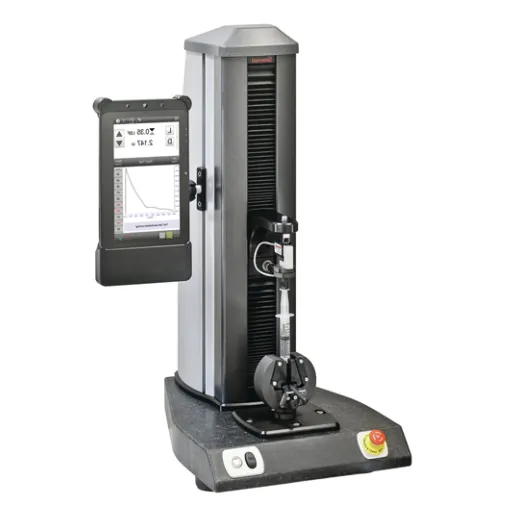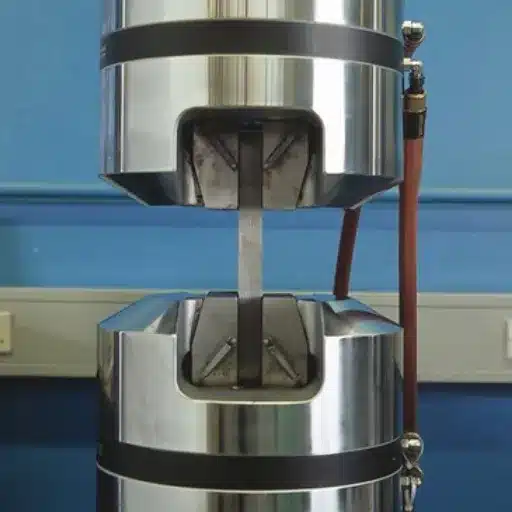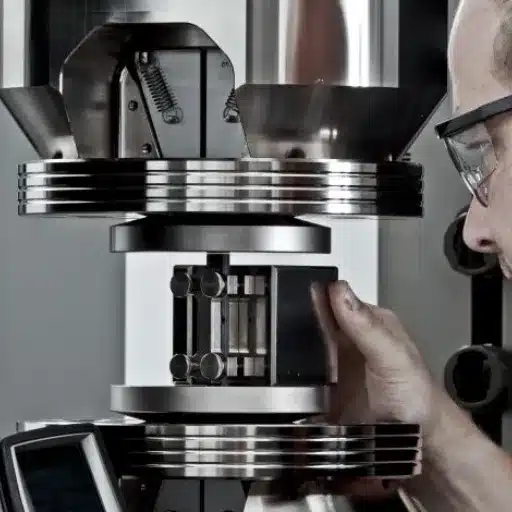When one dwells on the concepts surrounding forces, one will find them integral to many industries: from aerospace engineering to the manufacturing of medical devices. Force measurement ensures that the highest quality is met and that the systems and their products are safe. In this blog post, we want to walk the reader through the intriguing world of force test and measurement, offering further insight about the contemporary test systems that yield the highest standards of accuracy and efficiency. For anyone coming across the principles of force testing for the first time or attempting to catch up with new realizations in measurement systems, this overview will offer some guidance through the technologies, applications, and innovations that constitute this field. Stay with us as we unravel the tools and techniques that engineers and scientists incorporate to continually push the boundaries of performance and precision.
Understanding Force Testing

Force Testing
A force test is a method used for checking the strength, durability, or capacity of materials, components, or assemblies subjected to specific loads or forces. Forces of tension, compression, or shear are, for example, applied to see how the subject responds under certain conditions. Testing attempts to determine the material or product to have an exact perception along with the capacity to withstand stress and strain without material breakdown.
The significance of force testing lies in its being the variable by which safety, quality, and reliability are guaranteed in many industries such as construction, automotive, aerospace, and manufacturing. Knowing the limits of the load from force testing allows manufacturers to prevent failures and, hence, the development of their products. From testing load-bearing elements to consumer goods, it provides the knowledge to help achieve better performance and thorough user satisfaction.
Force-testing operations require special equipment, in which controlled forces are applied by force gauges or testing machines, and the response from the material is recorded. The data format for the test might include breaking points, deformation, elasticity limits, and fatigue resistance. This helps engineers and scientists in improving materials, processes, innovation, and development in almost infinite applications.
Importance of Force Measurement in Industries
Force measurement is important in production as it ensures quality, safety, and performance. Force testing makes certain that materials and components conform to the specifications of the design and withstand the stress applied during normal use. This increases reliability and durability, reduces product failure, and builds confidence in the consumer.
Specific industries use force measurement to ensure safety. Automotive, aerospace, and construction industries define their operational forces with high precision to guarantee the structural integrity of their vehicles, aircraft, and infrastructure, respectively. Vehicles, aircraft, and infrastructure must withstand severe operational forces and test forces encountered in all operations are crucial in ensuring safety. Accurate measurements are used to find design shortcomings and avert disastrous failures, thereby safeguarding the users and their investments.
The inventiveness is aided by force measurement, which can deliver accurate information for R&D. When one is aware of how materials perform under stress, their engineering imaginations will run wild with new designs, new materials, and new processes. The result is an accelerated pace of technological development across industries for greater efficiency and sustainability while answering the call of changing market pressures.
Types of Force and Their Applications
This understanding of the various types of force is said to be industrially useful, which helps in better designs, safer rolls, and optimized processes. We will discuss here the major forces and their applications:
Tensile Force
Tensile force comes in as a force that acts to stretch one object. It is applied in different areas such as construction and structural engineering. For example, tensile testing is used to assess the strength of steel cables, ropes, and polymers. It is known that carbon fiber-reinforced materials are among the strongest tensile materials and their tensile strength exceeds 4,000 MPa (megapascals), so they are used in aerospace and automotive fields as well.
Compressive Force
A compressive force occurs when a body is compressed or squished. It is a force of prime importance in architectural design as well as civil engineering. Bridges, pillars, and concrete structures are built to withstand colossal compressive forces. Materials scientists have shown that ultra-high-performance concrete can attain compressive strengths of up to 150 MPa, creating infrastructure that lasts longer.
Shear Force
Shear force acts parallel to the surface of layers within a material causing them to slide against one another. This force is critically applied in sheet metal fabrication and mechanical engineering. With such advanced manufacturing techniques as laser cutting and 3D printing, practical shear forces are employed to maximize precise designs with minimal wastage.
Torsional Force
It is when an object experiences some twisting that torsion sets an action upon it. Worldwide applications involving torque generation contradict working upon torsion. The latest materializations for turbine blades-titanium and composites-create better defenses against torsional stress and thusly up the efficiency of energy production systems.
Friction
Frictional force resists motion and hence is instrumental in automotive brakes, conveyor belts, and industrial equipment. To name an instance, ABS is a modern innovation that uses the concept of friction to ensure safety to a car. Industrial data reveal that ceramic or carbon-ceramic brake pads perform better because they can withstand high temperatures with constant friction characteristics.
Elastic Force
Elastic force occurs while stretching or compressing any material, making it return to its original shape. Elastic force finds application in consumer goods like mattresses and sportswear, among others, and even in the medical field for prosthetics. Recent research highlights developments in smart elastic materials with systems for sensor integration and real-time feedback, wherein the growth potential of such materials exists in healthcare and athletics.
Gravitational Force
The gravitational force acts as the basic force for almost all physical systems. Applications in satellite orbits, hydropower systems, etc., remain somewhat excluded. On the agricultural side, gravity-fed irrigation systems have been found to cut water wastage by almost 50%, making its choice a viable one in places where water is scarce.
Types of Force Measurement

Tensile Testing Explained
In tensile testing, it is determined how a material reacts to forces that try to stretch it. The properties measured include tensile strength, elongation, and elasticity. The test involves clamping the sample material at both ends and stretching it until cracking occurs, with very precise measurements taken throughout the process.
Tensile testing results are very important for describing the mechanical properties of any material. Tensile strength describes how much force a material can resist just before breaking; this parameter is important in ensuring that the material can be put to use in a certain application. Elongation describes how much stretching can be performed on the material before it breaks, which shows how flexible the material is, while elasticity describes whether the material can return to its normal position after deformation.
The test is applied heavily by construction, aerospace, and manufacturing industries to check the adherence of stress to materials. These evaluations of basic properties help engineers and researchers decide on materials to achieve particular mechanical characteristics in projects.
Compression Testing Overview
Compression testing refers to the ways materials react when subjected to compressive force and pressure on a sample until it starts to deform or fracture. It measures some critical material properties like compression strength, yield strength, and the strain the material can sustain. From these features, analysis is done by the engineer to ascertain the suitability of an application.
The sample is placed between two plates. Force is applied gradually until the test specimen resists an increasing load. Hence, this method provides the test data required for the behavior of a material under applied conditions. Compression testing hence finds better applications for materials that can take heavy stresses could be as metals, composites, plastics, or ceramics.
Compression testing assures the safety and durability of structures and products in building construction, automotive, and aerospace industries. Knowledge of compressive properties of materials enables the design of components that can withstand environmental forces and mechanical stresses, thus ensuring the longevity or stability of finished products.
Shear and Flexure Tests
Shear and flexure tests are very important for the mechanical study of materials under forces that cause sliding and bending. A shear test is performed to check how the material reacts to forces acting over a plane parallel to its surface of application, i.e., shear force. This service is very important for joint installation, fastener and adhesive application. Flexure tests, on the contrary, test the forces of bending resistance, presenting information on flexural strength and modulus.
A good knowledge of shear properties is essential to yield a structural design that will hold together, especially when components are subject to forces acting in more than two directions. For example, shear testing may be adopted to evaluate the performance of a laminated composite or a weld under strain right where failure is expected. This knowledge will be particularly valuable in avenues like aerospace, automobile, and construction henceforth.
Flexural tests hold great significance as these very tests simulate real-time bending under which a material encounters in beams, panels, and other structural elements. The test can measure the deformation of the material and, beyond that, reveal places in the structure that may be weaker at times. Such testing is of the utmost concern to make the design of products that can bear everyday usage, providing reliability with the reduced chance of fatigue of the material or the breaking off of the layers under the given load. Together, shear and flexure tests make safer and more efficient material use.
Testing Equipment and Test Systems

Overview of Testing Equipment
Testing equipment ensures the strength, durability, and performance of the materials in many industries. Modern testing systems now use the latest technology to guarantee accuracy, reliability, and replication of results. These systems include universal testing machines, shear testers, flexural testers, fatigue testing machines, and highly sensitive data acquisition systems.
- ▶ Universal Testing Machines (UTM): Universal testing machines are versatile instruments that do more than one mechanical test, such as tension, compression, or bending. From tens of newtons to over a thousand kilonewtons, these forces are used to test metals, polymers, composites, and many more materials.
- ▶ Shear and Flexural Testing Systems: Shear testers are designed to determine the shear strength of materials, while flexural testers measure the force acquired by materials to resist deformation under stress. In aerospace, construction, and automotive industries, the accuracy and precision of these systems matter tremendously.
- ▶ Fatigue Machines: These machines apply cycles of repetitive loading and unloading on the test materials to check their endurance limit. For example, many industrial fatigue machines can run load cycles at frequencies as high as 300 Hz, thus allowing rapid testing of long-term durability.
- ▶ NDT Equipment: NDT equipment includes ultrasounds, radioisotopes, eddy currents, etc., and allows for the inspection of the material without causing damage to it. Such methods are mostly used for internal danger detection and compliance assurance in oil and gas, transportation, and manufacturing industries.
- ▶ Advanced Data Acquisition Systems: Nowadays, the test apparatuses are linked to very complex data acquisition systems that record force, displacement, and other parameters with a great degree of precision. For instance, many systems employ high-speed measurement sensors offering a sample rate up to 1 MHz to ensure detailed readings for very fast events.
This-generation tools enhance efficiency while decreasing the operation’s human error level, and, above all, evolving data are required for product development. From this standpoint, automated testing procedures in conjunction with the use of AI in testing systems can give companies the results of the highest quality, consistently, thereby shortening the timeline for materials development.
Types of Test Systems for Force Measurement
Force measurement systems are used to measure forces acting on materials, components, or systems. The most common test systems for force measurement are those using mechanical force testers, load cells, or dynamic force measurement systems. These systems serve their respective applications depending on the kind of forces to be tested and their requirements.
Mechanical force testers are generally used in the measurement of static force. These systems use some combination of mechanical and sensor-based components to provide accurate measurements of applied force. They might be used for tensile, compression, and durability testing where forces are applied at a constant or controlled rate. These testers are inexpensive and are widely used in industries such as manufacturing and construction.
Load cells are very versatile instruments employed for the measurement of static and dynamic forces. They essentially convert mechanical force into electrical signals prone to measurement, thus allowing precise and repeatable measurements. Load cells come in different forms, like single-point type, shear beam, or tension type, depending upon the application. Meanwhile, dynamic force measurement systems capture transient or high-speed forces. Typically, these systems involve state-of-the-art sensor technologies and are applied in impact testing and vibration analysis, where forces change rapidly with time.
Choosing the Right Tester for Your Needs
Choosing the right force tester is important to guarantee accuracy and reliability based on specific applications. First, decide what type of force needs measuring: tension, compression, or shear. This way, the person may determine whether a static or dynamic force testing system will best suit the job. Also, consider the range of measurement and precision that testing will require and make sure the tester selected will measure in the range needed and with the accuracy desired.
Then, consider the environment in which the tester would be working. For example, applications in harsh environments, maybe in different circumstances, might warrant robust testers with environmental protection or temperature compensation. Furthermore, how often you will be taking measurements and how fast operations must be will sometimes govern a tester’s choice, especially with dynamic forces, where data acquisition must be at high speed.
Lastly, in considering ease of use and integration with your systems, you should choose a tester whose software is user-friendly and runs on your data analysis systems. Also, look into calibration support and maintenance contracts for your force tester. This ensures longevity in its accuracy and functioning. By following all these steps, a final consensus can be reached on buying a force tester that works best for your needs.
Industry Standards for Force Testing
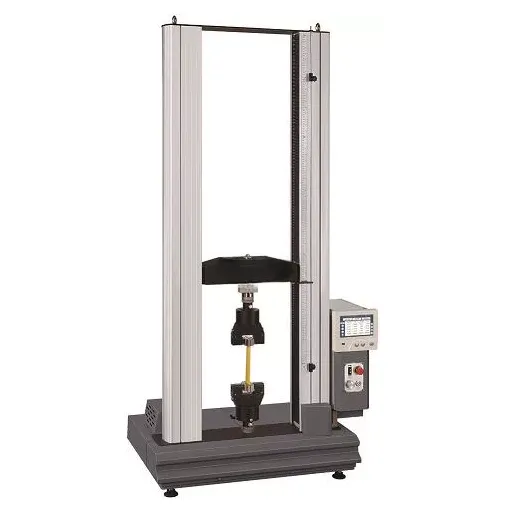
ISO Standards in Force Measurement
The ISO standards offer a set of criteria to be considered for force testing in any industry, ensuring consistency, accuracy, and reliability in the end product. Of particular relevance is ISO 7500, which puts forth the requirements for the calibration and verification of materials testing machines. This standard ensures that force measurement devices generate repeatable and precise results, thereby becoming the backbone for quality assurance in manufacturing and research.
The other major standard applied to this industry is ISO 376, calibrating force-proving instruments for force testing. This standard deals with the acceptable limits of uncertainty and accuracy of these force-measuring devices and, therefore, ensures the traceability of calibrations. Industries in which accuracy is none other than it can be put to, such as aerospace and automotive industries, cannot afford to work without ISO 376.
The ISO considers testing apparatus and equipment maintenance to be at a very high level to make them compatible with one another around the globe and have the results universally accepted. It is expected that implementation and conformity to these guidelines will ensure compliance with the regulatory requirements and subsequently promote conditions for long-term operation and efficiency in force testing applications.
ASTM Testing Procedures
ASTM testing procedures focus on reliability, accuracy, and uniformity in force testing. They ensure that all mechanical tests comply with the highest standards in determining the properties of materials and components. Industries all over the globe may follow these guidelines to obtain a standardization so that confidence builds in those results.
ASTM Force Testing Procedures require the execution of tests with respect to specific steps: set up tests, calibrate the machine, and record data appropriately. ASTM tests usually include tensile testing, compression testing, or flexure testing. Each test follows a series of strict procedures outlined in ASTM standards so that the outcome can be reproduced and compared between laboratories and industries alike.
An ASTM standard must be followed for it to be accepted by regulatory demands and considered safe in engineering applications. These methods allow the limitations of materials to be discovered and evaluated for their suitability for certain uses. This is actually to enhance the quality and reliability of the final product.
Compliance and Best Practices
The force testing is for the purpose of ensuring the quality of the product, the safety conditions for human life, and the conformity to regulatory standards across the spectrum of industries. It is meant to provide data on material limits, comprising tensile, compressive, and shear strength, to categorize the utility of materials in some applications. By following such standards of testing, such as ASTM or ISO, it would assure that the results are comparable, consistent, and reliable regardless of the laboratory or organization where the testing has been conducted.
To remain compliant, force tests must be performed per the stated procedures laid down in their respective standards. These procedures commonly guide calibrating the equipment, considering such test conditions as temperature and humidity, certain sample preparation methods, and proper reporting of data. Such best practices will help manufacturers generate suitable data, withstanding reproducibility tests, and will not infringe on regulatory requirements, therefore securing acceptance and trust among stakeholders.
Proper force testing keeps the failure risk in check, improves product performance, and assists in developing newer materials. Periodic audits and staff training programs should be the norm, with changes to force testing procedures as a consequence of a change in any standards hence maintained against performers. Adhering to such guidelines only guarantees the purity of test results and realizes the capability of materials or products to remain fairly safe and reliable for the applications they were intended for.
Recent Innovations in Force Testing
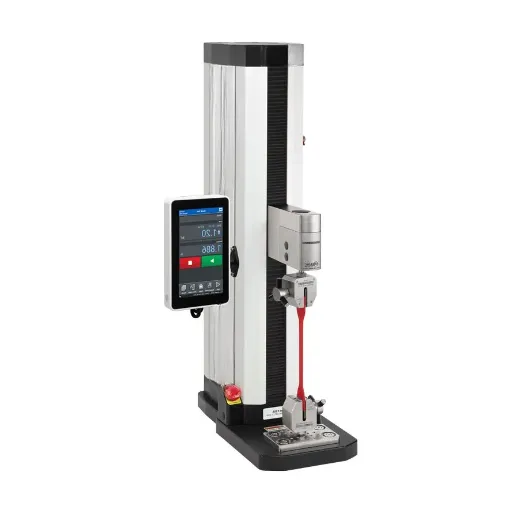
Emerging Technologies in Testing Equipment
Force testing will always be in a state of constant evolution, integrating new technologies for improvement in accuracy and efficiency. One of the changes would be the now digital nature of load cells. They offer highly precise results, and issues of errors due to mechanical inconsistencies are thus greatly minimized. The instant feedback provided by them ensures a much better test with all-around reliability in all kinds of applications.
The concept of automation is one other highlight of changes in force testing equipment. The automated systems perform intricate testing protocols with the least amount of human intervention, thereby eliminating practically any probability of operator error. Furthermore, these systems speed up the testing, increasing throughput and allowing higher volumes of material or product testing within a shorter period. Hence, automation would be particularly useful for industries requiring rigorous quality control measures.
Further, software advancements have also contributed to the modernization of force testing equipment. Sophisticated analysis tools now offer additional capabilities for data visualization and tracking, which help identify trends and abnormalities. With cloud integration, such systems can be monitored remotely for collaboration across various teams or even facilities. Together, these changes are developing newer modes for conducting force testing, providing uniform results alongside flexibility with the growing demands of industries across the world.
Automation in Force Measurement
Force measurement automation has immensely helped improve the accuracy, efficiency, and consistency of testing processes in various industries. Automated systems thus deprive much of the errors that come with manual testing, forcing precise measurements with very little variability. It is these measurement values that are recorded and relied upon for applications that demand very high standards of quality and safety.
Automated systems for force measurement can perform force application in short bursts, very fast, and very consistently. This increases the amount of testing possible during a certain amount of time, while productivity increases as a result of reduced times during testing. The tests can be fed into a pre-programmed system to save a lot of time and effort, thereby enabling repetitive testing processes without any input from the system operator. This is largely advantageous in industries such as manufacturing, aerospace, or healthcare, where precision and consistency are paramount matters.
Force measurement has seen additional refinements due to the synergistic coupling of advanced software with automation. With features such as real-time data monitoring, automatic data logging, and customizable reporting, the testing job is simplified, and analysis is enhanced. Automation ensures uniformity and allows scalability so that companies can efficiently meet changing industrial requirements at high-performance standards.
Future Trends in Force Testing
Force testing is fast becoming an evolving industry through the march of advancing technology and ever-mounting demands of multiple activity domains on it. A key trend is the increasing adoption of artificial intelligence and machine learning for analyzing data generated by the tests. Such test data can undergo predictive analytics, which allows organizations to identify potential defects by observing patterns formed. The goal of integrating AI and ML into force testing is to have testing methods more efficiently evaluated in a shorter period of time for a given decision.
Wireless and IoT technologies stand as another trend shaping the future. The IoT-enabled force testing system enhances connectivity through the remote monitoring and control of equipment and the shared use of data in real time. This shift particularly helps those industries that need monitoring to be done consistently across various locales, thus smoothing the workflow and encouraging collaboration among teams.
Testing innovations is thus putting sustainability center-stage. Manufacturers increasingly opt for environmentally friendly materials and energy conservation during the process of fabricating their testing equipment. On the other hand, they are implementing modular and scalable designs to extend the testing system’s life. Such efforts lessen their environmental impact so that organizations can synchronize with larger sustainability goals and regulations. Collectively, these advances-namely the technological and environmental force-testing future lean towards being smarter, connected, and sustainable.
Frequently Asked Questions (FAQ)
Q: What do you understand by force testing?
A: It denotes a series of tests wherein the mechanical strength and properties of materials and products are measured. It entails a whole variety of methods like tensile and compressive testing, torque testing, and hardness testing, among others, for a material to determine its behavior under force.
Q: Force Measurement Tests; Why are they so important?
A: Force measurement tests are imperative to ascertain that a particular product meets the standards of quality in diverse industries. This assures manufacturers, by testing the ability of a material to resist stress under force, that the product will work properly and be fit for purpose.
Q: What types of testing are involved in force testing?
A: Force testing covers tensile and compression testing, torque testing, and indentation hardness testing. The different methods offer various performance evaluations of a material undergoing load, hence engineers are better able to predict a material behaving under practical situations.
Q: How do test stands aid force testing?
A: Test stands are used as stable platforms on which force tests can be subjected; loads having to be applied with a high level of accuracy. They may thus be used for tensile or compression testing, ensuring that the force required is applied with the highest level of accuracy and consistency.
Q: What is the importance of testing rotating parts?
A: Testing of rotating parts must be performed because these components are typically subject to cyclic loadings that could wear, fatigue, or fail them. Through torque testing and other relevant assessments of force, manufacturers guarantee that these parts display satisfactory functionality throughout their life-cycle.
Q: While force testing, how does an extensometer operate?
A: An extensometer is an apparatus used to measure deformation or strain occurring in a specimen placed under uniaxial load. The data obtained are needed to draw stress-strain curves that, subsequently, help in understanding the mechanical behavior of the material under load.
Q: Is force testing able to save cost in production?
A: Yes, force testing can save cost if it successfully detects weaknesses in the materials or designs early in the production process. This way, manufacturers can debug their products before they go into full production, resulting in fewer product flaws and better consumer acceptance.
Q: And what properties of a material are tested in force testing?
A: Force testing assesses various properties of the material under test: tensile strength, compressive strength, hardness, or resistance to deformation. Such properties are extremely important for making sure the products and materials can withstand the demands of their use.
Q: How do product designers utilize force testing results?
A: The product designers use force testing results in their design to assure that the fit components will sustain the expected loads and stresses. This information is crucial in ensuring that the products are capable of meeting quality standards while at the same time capable of performing satisfactorily in their intended use.
Q: What are the benefits of using software-controlled force testing equipment?
A: Force testing equipment with software control provides detailed applications of test forces, along with repeatability of results; all being necessary for consistency in quality assurance. The technology allows for detailed collection and analysis of data, making the evaluation of materials and products easier under various conditions.
References
-
Xometry Resource Center
Force Testing: Purpose, Importance, Types of Testing, and More
This resource provides an overview of force testing, its applications, and its importance across various industries. -
ScienceDirect
Comparison of Push/Pull Force Estimates Using a Single-Axis Force Gauge
A study offering recommendations for improving hand force estimates in push/pull testing scenarios. -
Research Guides by Benedictine University
Evaluating Sources: The CRAAP Test
While not specific to force testing, this guide helps evaluate the reliability and credibility of sources, which is crucial for research. -
American Physical Society (APS)
Improving Test Security and Efficiency of Computerized Adaptive Testing
A paper discussing advancements in testing methodologies, which may include applications in force testing.

